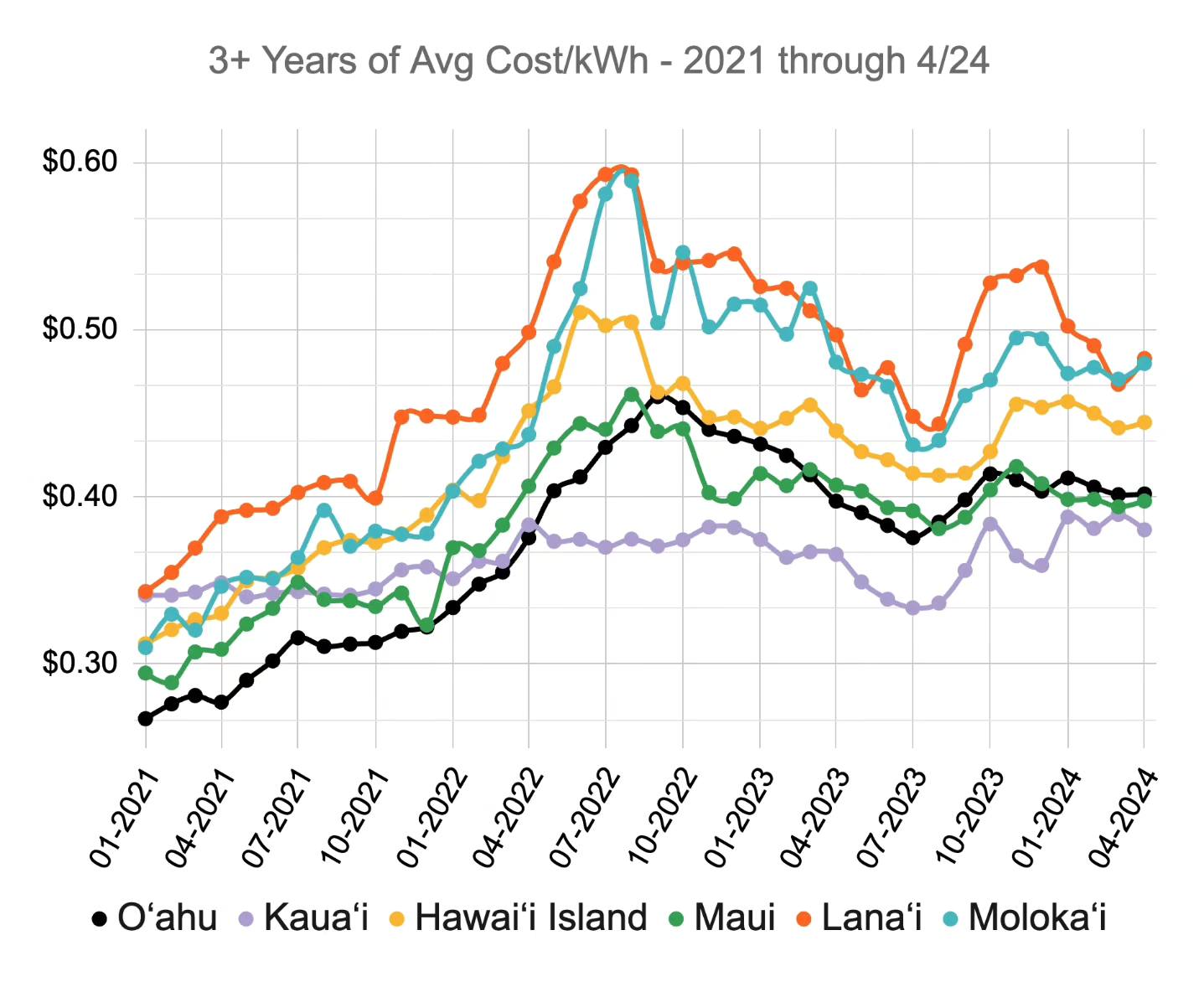Sign up for daily news updates from CleanTechnica on email. Or follow us on Google News!
[Editor’s note: We publish letters to the editor when they are smart and contribute to the greater good of understanding our clean energy transition. This post is both, and is written by a serial mission-driven entrepreneur who has been studying the energy ecosystem in Hawaii for over a decade.]
By Olin Lagon
I just updated my 3+ year tracking of Hawaii’s energy rates that I pull directly from the legal filings from our two utilities. Over this period, you can see HECO (Honolulu County) rates are up about 37% since 2021, a rate about double that of our inflation. Rates on Kauaʻi have increased under 6%, a rate four times lower than inflation (first chart).

In 2024, all islands are slightly down on average by -1.74%. Only Molokaʻi has had an average increase of 0.18%. Hawaiian Electric companies (HECO) have averaged a -1.98% rate reduction. Rates on Kauaʻi are down about -0.53%. This may change as HECO has asked for a rate increase to take effect starting in June.
If we look not at the rate of change but just the pure cost of energy, Kauaʻi went from the most expensive energy in the state to the cheapest in about a year and has kept this low cost lead ever since (chart above).
The most compelling data point is the Kauaʻi purple line. You can see that over an extended period of time, energy rates on Kauaʻi have gone down given inflation. Kauaʻi leads our state in the percentage of indigenous renewable energy that they use. If we project what will happen to energy prices on Kauaʻi when they hit 100%, it may look even more positive. That is because given today’s prices, the cheapest form of energy generation is via renewable energy with energy storage.
Give this paper a read to see just how disruptive 100% clean energy can be to reduce our energy rates. When you design a system with renewables, you have to put enough renewable generation in place to produce what is needed during the lowest possible generation periods, in other words, designing to meet the trough. When you do this, the system will roughly generate five times the amount of energy during the other periods of the year creating an abundance of energy that will drive rates down.
The more locally generated power we use, the better for all of us, and the more living wage jobs we will create to keep our keiki home.
Have a tip for CleanTechnica? Want to advertise? Want to suggest a guest for our CleanTech Talk podcast? Contact us here.
Latest CleanTechnica.TV Video
CleanTechnica uses affiliate links. See our policy here.





